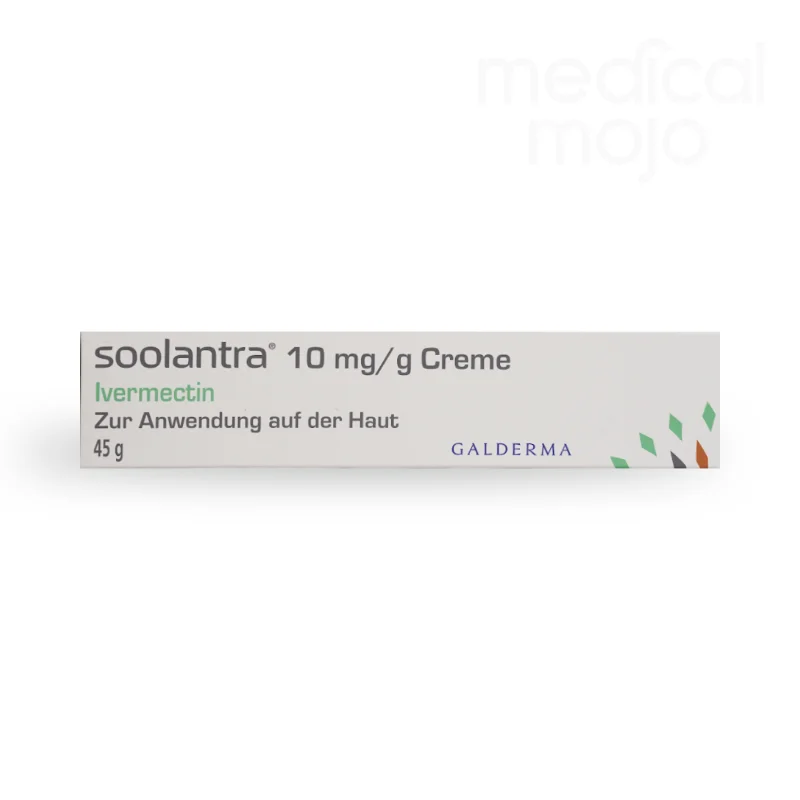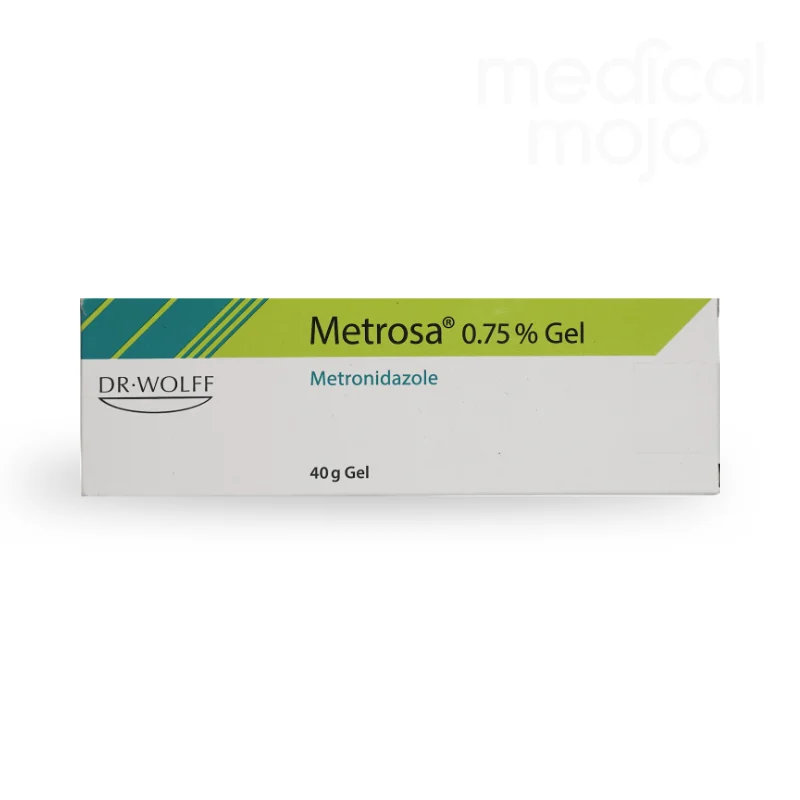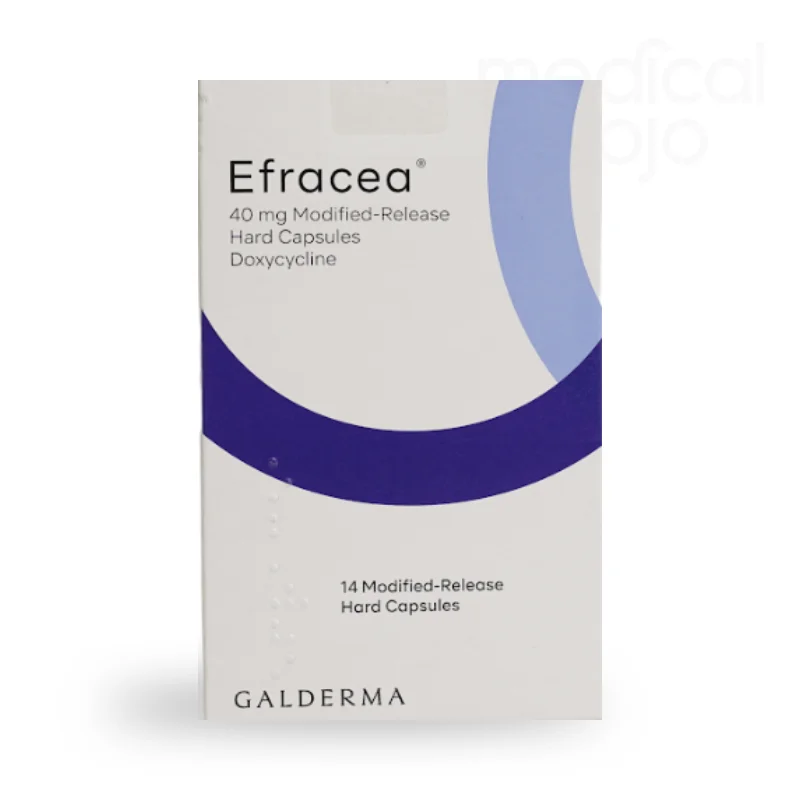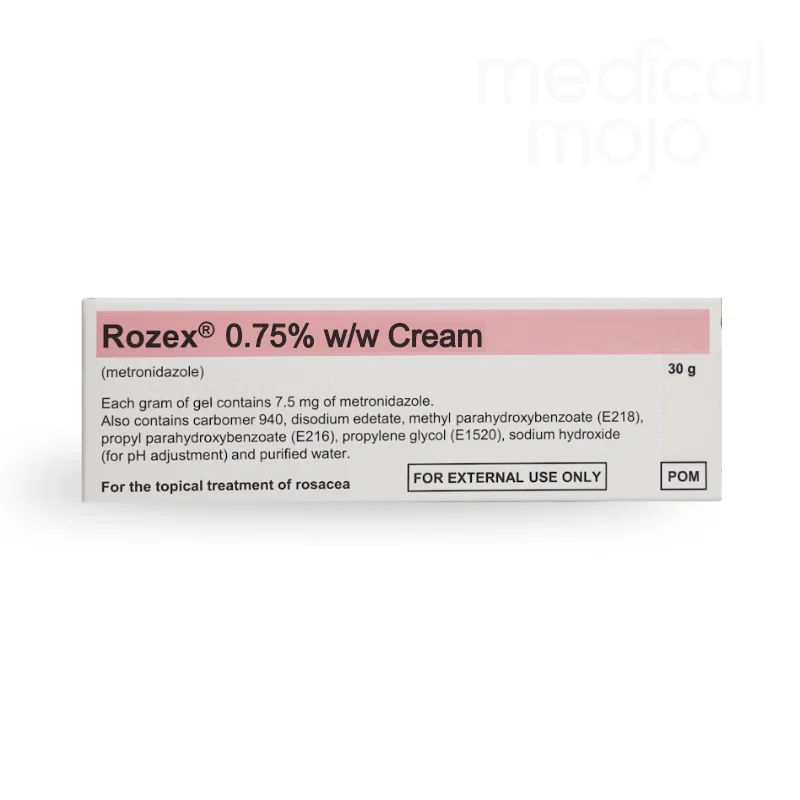How does Soolantra Cream treat rosacea?
Soolantra Cream is an effective, prescription-only treatment for acne rosacea. It works by reducing inflammation and killing the parasites (Demodex mites) that can contribute to the condition. Applied directly to the affected area, Soolantra improves the appearance of blemishes and bumps associated with rosacea. Most users notice improvement within two weeks, and the cream can be used continuously for up to four months.
How do you use Soolantra?
Soolantra should only be applied to the facial skin, avoiding contact with the eyes, mouth, and mucous membranes. The standard dosage is one application per day, for up to four months.
Here’s how to use it:
- Apply a pea-sized amount of cream to each of the affected areas (forehead, nose, chin, and cheeks).
- Spread the cream in a thin layer across your face, avoiding the eyelids and lips.
- Wash your hands immediately after application.
- Allow the cream to dry before applying other skincare products or makeup.
The best time to apply Soolantra is either in the morning or evening, but consistency is key.
Note: Soolantra Cream is for topical use only. Do not use it in or near the eyes, mouth, or other sensitive areas.
How long does Soolantra cream take to work?
Most users begin to see improvement in their rosacea symptoms within four weeks of using Soolantra Cream. Although some may notice changes earlier, full results typically require consistent use for several weeks. If you don’t see any improvement after three months, consult your doctor or pharmacist.
Is Soolantra Cream suitable for everyone?
While Soolantra is effective for many people with rosacea, it may not be suitable for everyone. You should avoid using Soolantra if:
- You are allergic to ivermectin or any other ingredients listed in the patient information leaflet.
- You are under the age of 18.
- You are pregnant or breastfeeding.
Always consult your doctor or pharmacist before starting a new treatment.
What results can I expect from using Soolantra Cream?
Clinical studies have shown that patients using Soolantra experienced significant improvement in their rosacea symptoms. After two weeks, patients reported 27% fewer bumps and blemishes, and after twelve weeks, this figure increased to up to 75%. Continued use often results in even better outcomes, with 38% of users being “clear” or “almost clear” of rosacea symptoms after twelve weeks. If no improvement is seen after three months, you should stop using Soolantra and consult your doctor.
What are the alternatives to Soolantra Cream for treating rosacea?
Several alternatives to Soolantra Cream are available for treating rosacea, including:
- Rozex Gel: Contains the antibiotic metronidazole, effective for acne rosacea but may cause skin irritation.
- Finacea Gel: Treats rosacea pimples and spots but may be less effective for redness and is not recommended for people with asthma.
- Dermalex Rosacea Cream: An over-the-counter option that helps with redness and spider veins by repairing the skin’s barrier function.
You can explore these alternatives to find the best treatment for your needs.
What ingredients are in Soolantra Cream?
Soolantra Cream contains the active ingredient ivermectin, with 10mg per 1g of cream. Other ingredients include glycerol, isopropyl palmitate, carbomer, dimethicone, cetyl alcohol, stearyl alcohol, methyl parahydroxybenzoate (E218), propyl parahydroxybenzoate (E216), and purified water.
What are the potential side effects of using Soolantra Cream?
The most common side effect of Soolantra Cream is a burning sensation on the skin. Other less common side effects may include itching, irritation, or dryness of the skin. If you experience redness or inflammation, or any other unexpected side effects, you should consult your doctor or pharmacist immediately.
Are there any warnings I should be aware of before using Soolantra Cream?
Do not use Soolantra if you are allergic to ivermectin or any of the other ingredients. If you are pregnant or breastfeeding, you should discuss the risks and benefits with your doctor. Additionally, Soolantra contains certain ingredients like cetyl alcohol, stearyl alcohol, and parahydroxybenzoates, which may cause allergic reactions or skin irritation in some people. Always inform your doctor of any other medications you are taking to avoid potential interactions.
For more detailed information, consult the Soolantra Patient Information Leaflet or speak with your healthcare provider.











